Learning Objectives
After this course, participants will be able to:
- List at least two of the coping skills in the Coping with your Tinnitus section of the ReSound Relief app
- Educate patients on how to navigate through the Coping with your Tinnitus section of the ReSound Relief app
- Incorporate apps into their tinnitus management practice
Introduction
Tinnitus is a subjective experience, and treatment of tinnitus involves invoking change in that subjective experience rather than “curing” the tinnitus itself. For many who suffer from tinnitus, an approach involving educational counseling with some supporting materials can be enough to alleviate anxiety and allow them to cope effectively with their tinnitus. For the subset of individuals with clinically significant tinnitus, changing the perception of tinnitus can take a long time, with treatment extending over more than a year. Thus, the relationship between the patient and clinician is paramount in tinnitus management. This relationship of collaboration and trust between the clinician and patient is formed at the consultation, where a strong counseling foundation educates and empowers patients to understand their tinnitus, as well as what they can do to alleviate the effects. One of the challenges many clinicians face is the full commitment from the patient in this journey. This article discusses how patient engagement and commitment can be encouraged via the use of apps in tinnitus treatment.
Conventional tinnitus management education usually comes in the form of paper-based materials - such as workbooks, information sheets and pamphlets. These supplement the informational counseling that is given at clinic visits, and patients are often on their own to review this information. These kinds of materials are an important part of tinnitus management, because patients retain only about half of the information presented in person. In addition, the affect of the clinician can also have a significant impact on how much information is retained (Shapiro, Boggs, Melamed, & Graham-Pole, 1992). However, paper-based materials have the disadvantage of being easily misplaced or they may simply not be read. Unread materials do not contribute to positive results, which can leave patients feeling uncertain, frustrated and helpless. Adding to this, tinnitus patients may not have a reliable resource for support and information apart from the clinician. Although the internet might seem like a convenient and readily accessible resource for information, it can be overwhelming. For example, a Google search for ‘Tinnitus’ yields more than 16 million hits. There is so much information and misinformation that patients may be left confused as to what information they should trust without guidance.
According to statistics company Statista, in 2017, more than 80% of the US population have cell phones, and 80% of those are smartphones. This means that many of the tinnitus patient population own a smartphone, providing an additional opportunity for more functional tinnitus tools via apps. Smartphone technology is well suited to help people manage, track and learn health-related data. Today there are thousands of health and wellness related apps for the most common smartphone platforms. Some apps are “connected”, meaning that they interface with another device or system. Fitness tracking bracelets and apps that connect patients to their healthcare providers are examples of connected apps. “Non-connected” healthcare apps commonly provide access to information or help people to track behaviors manually. In the area of tinnitus, smartphone-based tools translate to immediate accessibility, convenience and the assurance of having credible tinnitus information in the palm of one’s hand. There are already many tinnitus apps available. Most are “non-connected” sound therapy apps. A non-exhaustive list of such apps includes Relax Melodies (iLBSoft), My Noise (BVBA) and SleepStream 2 (Explosive Apps). These apps provide flexible sound therapy that can be immediately accessed and personalized for an individual’s own needs. While they add to a more varied selection of potential sound therapy, the shortcoming of most tinnitus apps is that they do not address the counseling and educational needs of the tinnitus population.
ReSound Relief app
The ReSound Relief app is a flexible and credible tinnitus tool that can be relied on for daily use. For clinicians, the app not only offers customizable sound therapy options that allow you to assist your patients better in tinnitus management, but it also supports and reinforces important tinnitus concepts and information already discussed in the clinic. For tinnitus patients, it is a comforting tool that allows them to easily play and adjust sounds according to their preferences, as well as reassuring them of good practice for tinnitus management.
The ReSound Relief app is a “non-connected” app in relation to hearing aids. This means that it does not control any hearing aid, nor is it restricted to use with hearing aids. In fact, sounds can be played over any sound output device, including the smartphone’s built-in speaker, an external speaker, headphones, or hearing aids. Some of the counseling and education features of the app do not require any sound output at all to use. This means that the app can be of benefit to any tinnitus patient, whether they wear hearing aids or not.
The following briefly reviews the components of the ReSound Relief app along with the rationale for each feature.
Sound Therapy
Like the vast majority of tinnitus apps, the ReSound Relief app includes a feature that allows patients to use sound as part of their tinnitus management. Using an app for sound therapy is convenient and flexible, as most people typically keep their smartphone within reach. Also, the sound can be played through whatever device the user desires. The output options are many, including headphones, the car stereo, a wireless Bluetooth speaker, a pillow speaker, hearing aids, and more. Further discussion of different ways sounds can be used therapeutically can be found in Piskosz (2016).
The ReSound Relief app is uniquely flexible in how it can accommodate individual preferences. The sound therapy flexibility of the Relief app is in the Create New Soundscape section, which allows dynamic, multi-layered sound creations. Users can layer up to five sounds at once, and can mix the volume levels of each sound independently. As sound therapy preferences may change with time, sounds can be added and deleted, allowing for new, stimulating soundscapes according to a user’s needs and preferences. Combined, these features make the ReSound Relief app one of the most complete and versatile tinnitus apps available today.
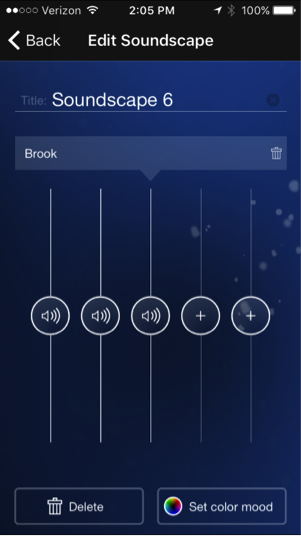
Figure 1. Users can create and mix up to 5 sounds of their own choosing to form soundscapes. The background color can also be personalized.
Multisensory Stimulation
The ReSound Relief app also engages users by utilizing multisensory stimulation. This means that patients can engage with the app not only with sound, but also with soothing visual and tactile elements. In addition to the auditory stimulation, it provides a visual component by allowing users to select an ever-changing color scheme, which changes the color of the background as a sound is being played. It also incorporates a tactile element, by allowing users to pop background bubbles, engaging them in a playful, non-competing activity. Although the physical action of popping the bubbles on the smartphone screen is similar to playing many games on a smartphone, it is important that the activity is not competitive. This eliminates the stress that might be associated with trying to complete the activity within a time period, trying to attain a certain score or trying to perform better than others. Combined, these components are designed to enhance engagement with the app, potentially creating diversion from tinnitus.
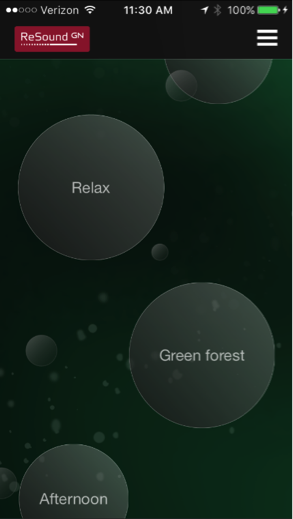
Figure 2. Multisensory stimulation in the ReSound Relief app includes auditory, visual and tactile stimulation to engage users and distract from tinnitus. Users can “pop” the bubbles on the smartphone screen.
Coping Skills
In addition to the credible tinnitus management information, the Relief app also has a section called Coping with Your Tinnitus. This section is based on coping practices taught within Progressive Tinnitus Management (PTM; Henry, Schechter, Loovis, & Zaugg, 2005), but which are useful regardless of tinnitus management approach. PTM is an evidence-based approach to managing tinnitus that provides a systematic framework for treatment with progressive levels of intervention. As with other tinnitus management approaches, counseling is a fundamental component of PTM. Patients who require minimal intervention to manage their tinnitus may in fact need no more than counseling. The most severely affected require ongoing counseling throughout their treatment. Apart from education about tinnitus, the content of counseling includes some universal strategies for coping with tinnitus, such as healthy lifestyle choices, and regular participation in meaningful activities. The ReSound Relief app includes a set of seven of such coping skills.
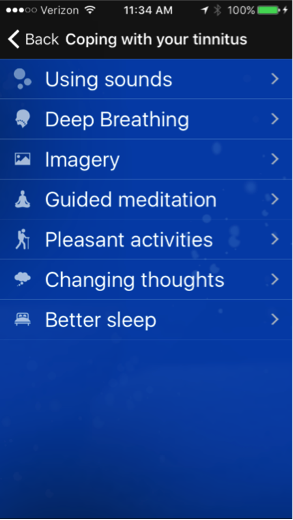
Figure 3. Seven coping skills based on PTM are included in the ReSound Relief app.
The Coping with Your Tinnitus section is designed to provide engaging activities, exercises and information for people struggling with tinnitus. It is intended to support and reinforce concepts discussed during tinnitus management. As with all elements in the ReSound Relief app, Coping with Your Tinnitus is a tool to be used in a comprehensive tinnitus management program.
Using Sounds
Using Sounds allows the patient to categorize sounds into categories using the sound therapy principles of PTM (Henry, Zaugg, Myers,& Schechter, 2008). In this approach, the clinician instructs the patient in how to use sounds in different ways to manage tinnitus and helps them to create an individualized plan. While this involves extensive education of the patient, success is facilitated by breaking the process of learning into surmountable tasks. One of these tasks is to identify and categorize sounds in terms of the way the individual patient responds to them. Different people respond to sounds in different ways; categorizing sounds is an activity in which patients gain experience noticing which sounds are helpful for them. The ReSound Relief app reinforces the ideas behind categorizing sounds, while also making it easy for patients to do so. Once sounds are categorized, they can be easily accessed again according to category. The categorized sounds can be used in PTM as part of sound therapy plans that patients devise to help them manage specific situations. The sound categories and their definitions are as follows:
- Soothing: Sounds that have a relaxing effect
- Interesting: Sounds that draw attention away from the tinnitus
- Background: Neutral sounds that eliminate silence
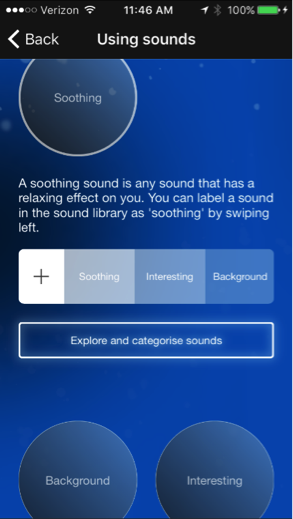
Figure 4. Sounds can be categorized and later retrieved according to category to help patients in particular situations. For example, sounds that are categorized as “Background” might be helpful to reduce the perceptual contrast of tinnitus in situations where the patient needs to focus, whereas “Interesting” sounds can create an attentional diversion to a sound other than tinnitus.
Deep Breathing
Some tinnitus management strategies have their roots in Cognitive Behavioral Therapy (CBT; Sweetow, 1995). Relaxation techniques are one component of a CBT treatment approach to tinnitus management. The patient can be taught to control the physical and psychological sensations associated with tinnitus. The goal is to break the reaction to tinnitus rather than affect the tinnitus itself. The ReSound Relief app offers Deep Breathing as an exercise to help the body relax and counteract tension and stress. Users breathe in and out in synch with a bubble that expands and contracts. They choose a pace suitable to them from three speed options: Normal, Slow & Deep.
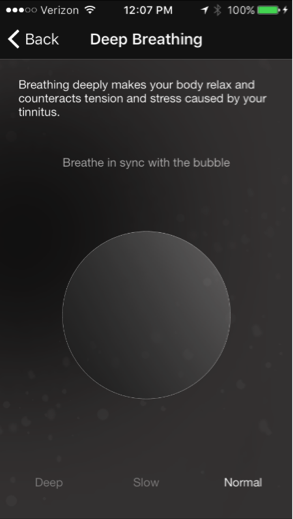
Figure 5. An expanding and contracting bubble can help patients focus on relaxing breathing techniques.
Imagery
Imagery techniques are often practiced together with physical relaxation techniques, such as deep breathing. The patient uses imagery techniques to relax by systematically creating a detailed mental image of an attractive and peaceful setting or environment. The Imagery section of the ReSound Relief app supports patients in imagining a calm and peaceful place. This helps with relaxation and distraction from tinnitus. They activate an Imagery environment by pressing a bubble. There are three Imagery options: At the beach, Woods, and Brook.
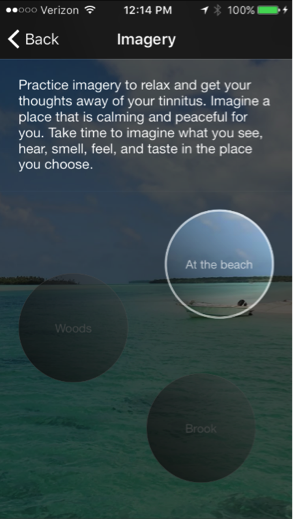
Figure 6. Imagery is also a coping skill that is supported by the ReSound Relief app.
Changing Thoughts
Another CBT component involves cognitive restructuring of thoughts and beliefs about one’s tinnitus. Changing thoughts can change emotions. The Changing Thoughts portion of the app lists some common negative thoughts and beliefs that people might have about their tinnitus, and offers positive alternatives to these upsetting thoughts. The goal is to help the patient challenge and ultimately control these thoughts. By clicking on a negative thought, a screen with suggestions on how to change it to something less upsetting appears.
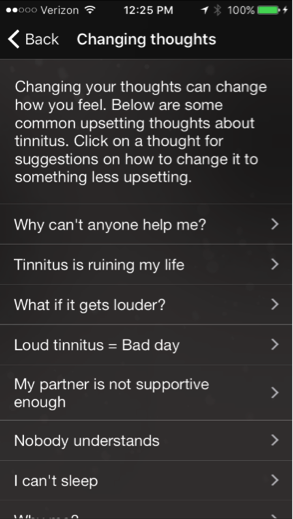
Figure 7. Changing one’s thoughts about tinnitus is also a coping skill. This feature provides suggestions to help users reframe upsetting thoughts about tinnitus in a different way that does not reinforce the negative aspects.
Guided Meditation
Mindfulness-based training is also helpful for some people to cope with their tinnitus. Mindfulness refers to paying attention in a particular way to what is happening in the moment and without judgment. By being mindful, it is possible for patients to change their relationship with their tinnitus, and reduce the associated struggles (Gans, O’Sullivan, & Bircheff, 2014). Although “paying attention” does not sound difficult, attending in a mindful way is not easy for everyone. Inspired by mindfulness, the Guided Meditation feature in the ReSound Relief app helps some people cope with their tinnitus. There are a variety of guided meditation exercises from which to choose. These guided meditations can also be accessed from the Sound Mixer portion of the app, where patients can incorporate them into personalized soundscapes. Simply select an exercise, listen and relax.
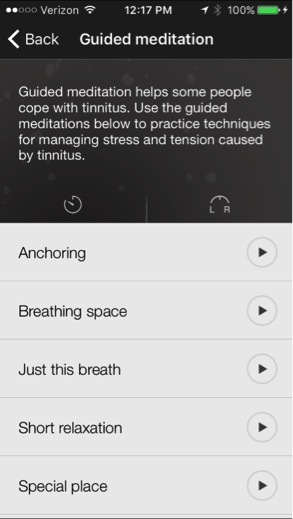
Figure 8. Guided Meditation leads the user through exercises that help them manage stress. These exercises can be incorporated into soundscapes with other sounds.
Pleasant Activities
Enjoying activities makes life more pleasant, and this holds true for tinnitus patients as well as anyone. Pleasant Activities is a list of activities a patient can be reminded of through a pop-up notification. This reminder serves as a way to help tinnitus patients be mindful of how they are spending their time, and how they might do something different to increase their sense of well-being. To add an activity reminder, patients press the "+" symbol.
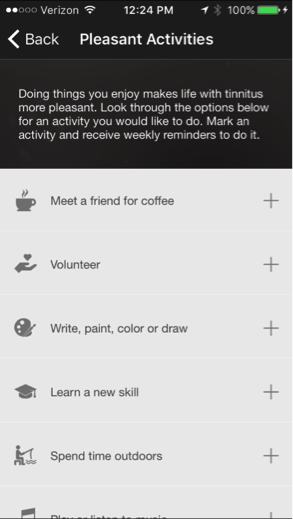
Figure 9. The Pleasant Activities coping skill lets users define notifications that will remind them to do activities that they enjoy.
Better Sleep
Sleep hygiene is important for the tinnitus patient. Bedtime is a time of day when patients can be particularly susceptible to negative thoughts and emotions about their tinnitus. In addition, the quiet bedroom environment might serve to draw their attention more to their tinnitus, which is counterproductive for sleep. Better Sleep offers tips for getting a good night’s rest. A good night’s rest allows bodies and minds to perform more effectively throughout the day, and contributes to reducing stress and anxiety. Practicing these tips daily may help patients achieve better sleep practices.
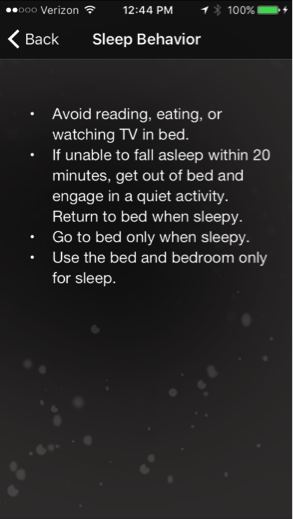
Figure 10. Practical advice to promote better sleep is also included in the ReSound Relief app as a coping skill.
Resources
In addition to the Coping with Your Tinnitus section, the ReSound Relief app also offers a variety of website hyperlinks. At the bottom of the How Can We Help section in the main menu, there is an Additional References option that will open up a list of credible tinnitus websites hosted by reputable experts in the area of tinnitus. The information on these websites includes educational content about hearing, tinnitus, and hearing loss, information about therapeutic options, and information about ongoing research in the area of tinnitus. This information can help reinforce and support concepts that are shared in the clinic.
Summary
Tinnitus management involves access and usage of educational and support materials. However, patients may not refer to conventional paper-based materials to the degree that they might benefit. The ubiquity of smartphone technology provides opportunities for patients to access such materials at anytime and anywhere they are so inclined via apps and websites. Unlike many apps available for tinnitus, the Resound Relief app is a comprehensive tinnitus app that attempts to address all aspects of tinnitus management, not just the sound therapy component. With continual app updates and collaborations with key opinion leaders in the area of tinnitus research and treatment, the ReSound Relief app continuously evolves to offer more benefit to both tinnitus patients and clinicians. ReSound Relief is available for free download in the App Store™ and Google Play™.
References
Gans, J.J., O’Sullivan, P., & Bircheff, V. (2014). Mindfulness based tinnitus stress reduction pilot study. Mindfulness, 5(3), 322-333.
Henry, J.A., Schechter, M.A., Loovis, C.L., & Zaugg, T.L. (2005). Clinical management of tinnitus using a" progressive intervention" approach. Journal of Rehabilitation Research and Development, 42(4), 95.
Henry, J.A., Zaugg, T.L., Myers, P.J., & Schechter, M.A. (2008). Using therapeutic sound with progressive audiologic tinnitus management. Trends in Amplification, 12(3), 188-209.
Piskosz, M. (2016). Innovative sound therapy strategies for tinnitus. Hearing Review, 23(8), 20.
Shapiro, D.E., Boggs, S.R., Melamed, B G., & Graham-Pole, J. (1992). The effect of varied physician affect on recall, anxiety, and perceptions in women at risk for breast cancer: an analogue study. Health Psychology, 11(1), 61.
Statista. (2017). Mobile phone penetration as share of the population in the United States from 2014 to 2020. Retrieved from: https://www.statista.com/statistics/222307/forecast-of-mobile-phone-penetration-in-the-us/
Sweetow, R.W. (1994). The evolution of Cognitive-Behavioral Therapy as an approach to tinnitus patient management. The International Tinnitus Journal, 1(1), 61-65.
Citation
Piskosz, M. (2017, June). ReSound Relief: A comprehensive tool for tinnitus management. AudiologyOnline, Article 20353. Retrieved from www.audiologyonline.com


